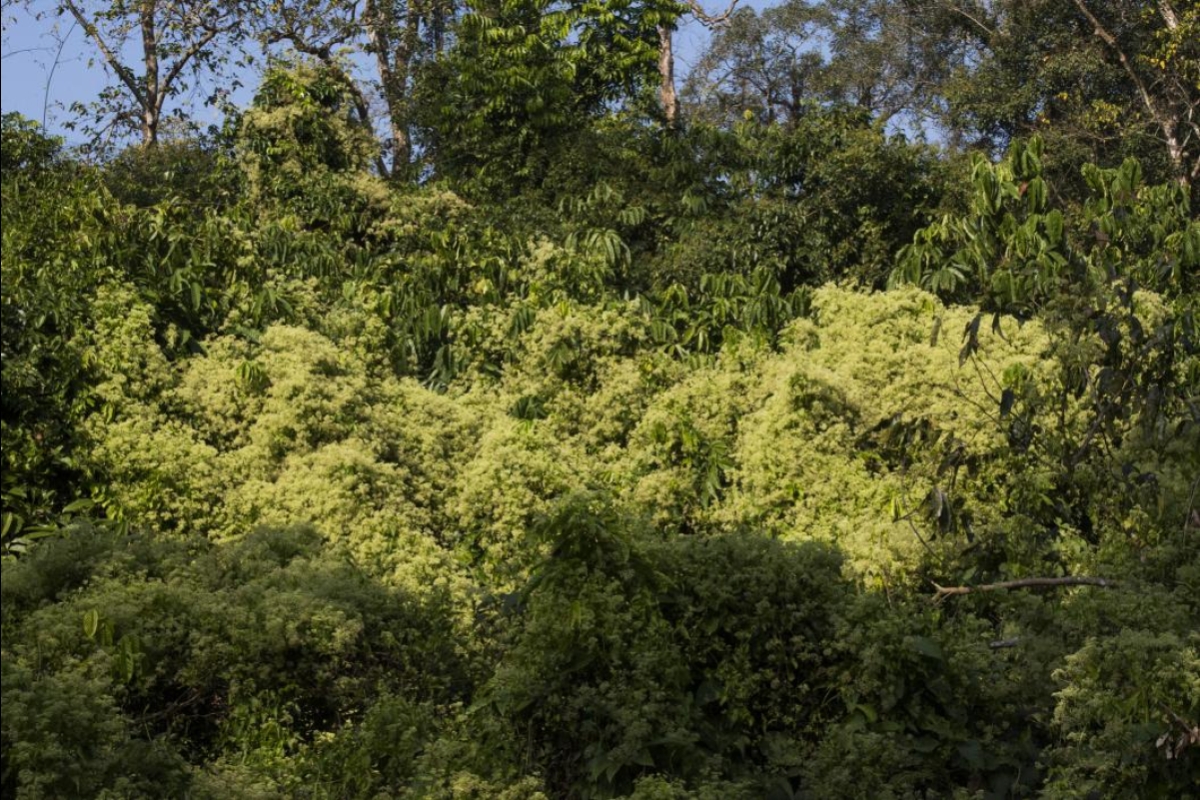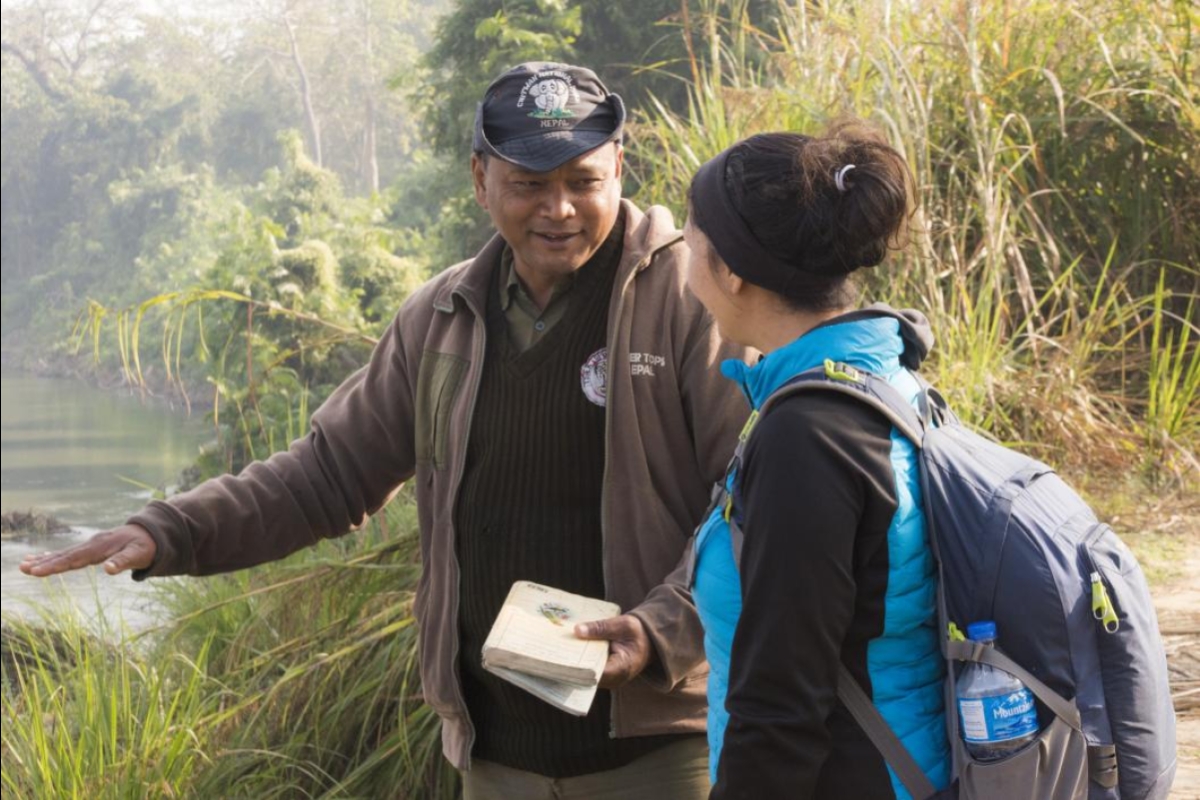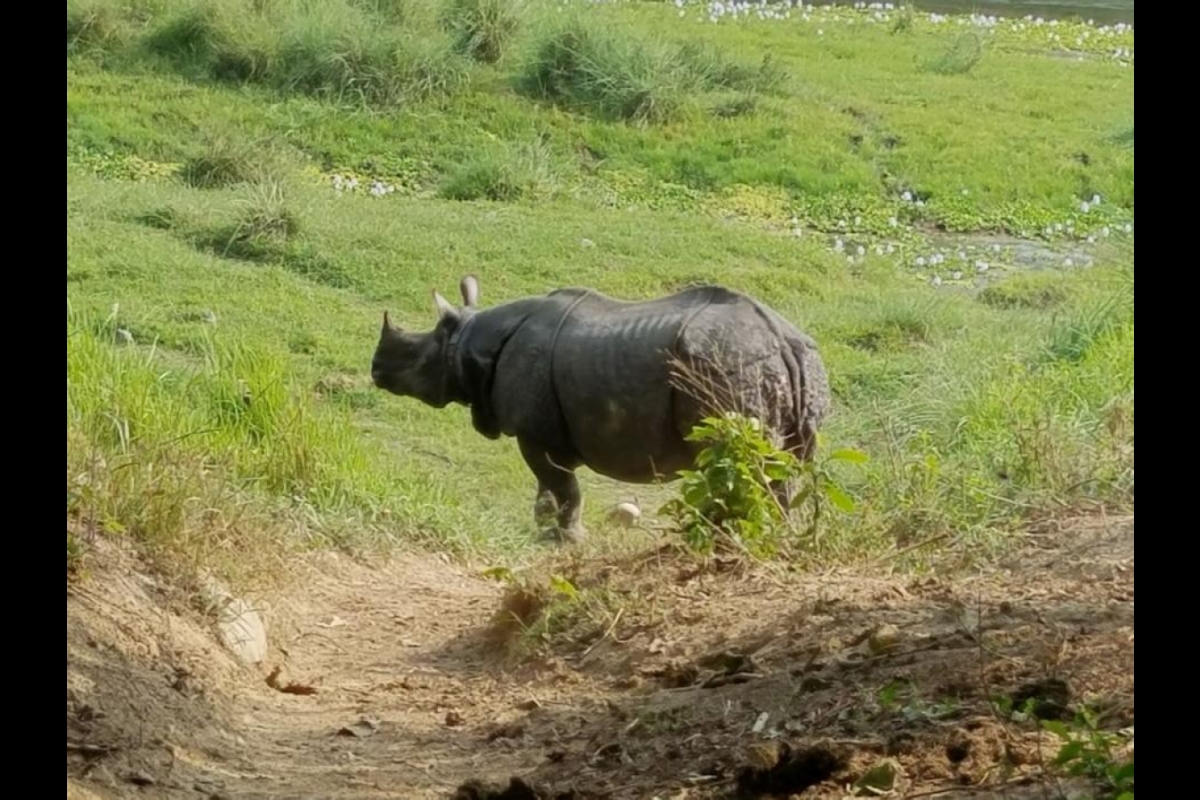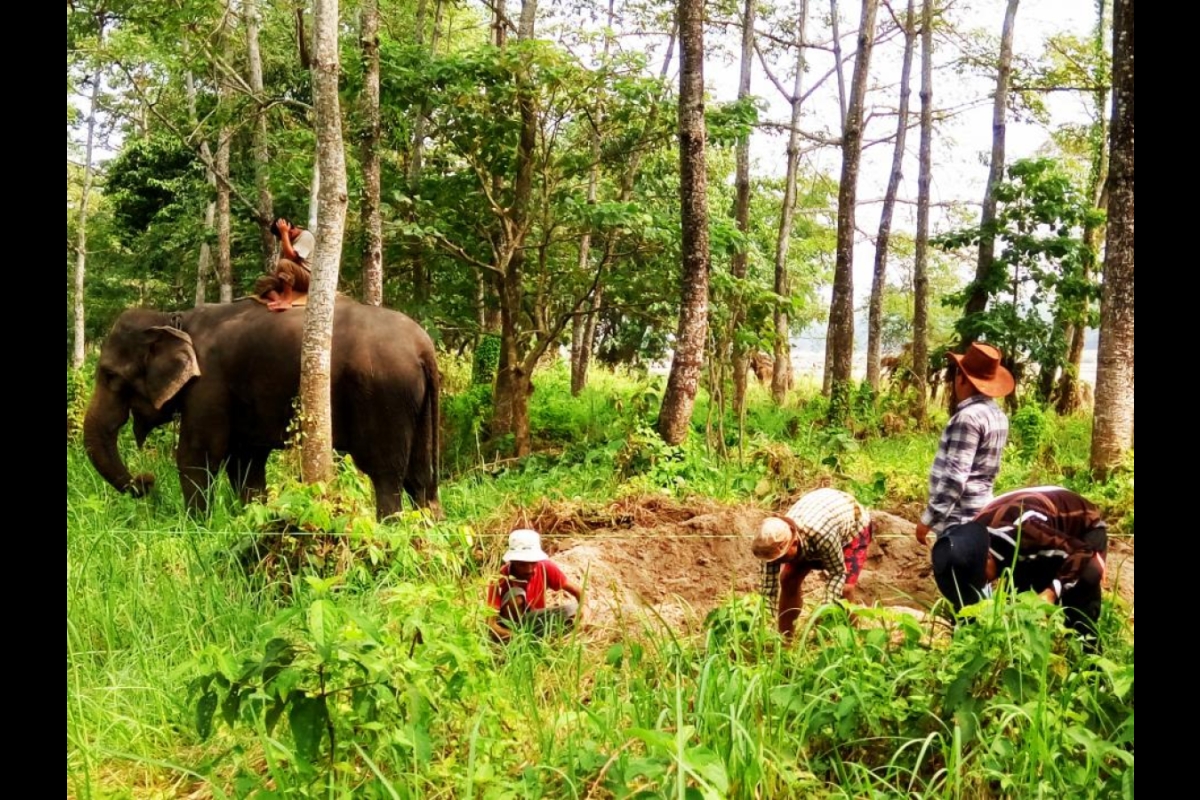Fear of being eaten by a wild animal is our most ancient emotion.
Physiologically, evolution has equipped humans with a cocktail of chemicals that automatically shoot into our systems at the sound of a guttural roar.
But being attacked by tooth and claw in the 21st century for most people is as likely as being killed by a sword or an arrow. Unless they live in parts of Africa and Asia, where it remains a very real threat.
Between 2007 and 2016, 40 people were killed in tiger attacks in the vicinity of Chitwan National Park in Nepal, according to park officials. Almost half of them were killed by one tigress. The cat remains at large.
An Arizona State University doctoral candidate in environmental life sciences spent last summer in Nepal near the national park, studying how an invasive vine is helping tigers and other wild animals attack people.
Michele Clark is earning her PhD in environmental life sciences from the School of Life Sciences. Last summer she worked in the buffer-zone forests the Nepalese government has established surrounding Chitwan National Park.
The buffer zones, or community forests, were established so local people can gather firewood or fodder for their animals.
In 2007, the area began to be invaded by a vine similar to kudzu. One plant was recorded that year. Seven years later, it covered 75 to 100 percent of the forest surveyed. “In just a matter of years, things have changed drastically,” Clark said.
Women go to the jungle every single day for about two hours to collect wood and grasses.
“In that time you’re really risking your life because there are so many animals there that are threatening,” Clark said. “In that way it’s taking more time to collect resources because where they used to go is now covered in the vine. They have to go deeper and deeper into the jungle to find the things they need.”
The vine, called mile-a-minute leaf (scientific name is Mikania micrantha), can grow very rapidly within a week, and it can cover the forest and kill the trees. The Nepalese jungle is trees and grasses, not vines, so the vine changes the dynamics. It creates extremely dense cover in the jungle.
Clark started her research by doing social surveys instead of ecological surveys.
“When I was asking them those questions, at least in terms of this vine, they were starting to become more fearful that they couldn’t escape tigers and rhinos if they were to attack them in the forest because they would trip on the vine,” she said. “Or they couldn’t see because it forms these impenetrable mats. If you were in a really dense invasion and you didn’t have a machete or something, it would be like climbing over boulders. You’d have to step over this, crawl under that. It would double your time.”
A young woman was killed in the same forest Clark worked in. On a day Clark was working in the jungle a woman had her arm broken in a rhino charge.
“It helped me put into perspective how important and dangerous resource collection is for women in these areas,” she said. Newspapers ran graphic photos of the tiger attack’s aftermath.
“It was really gory,” she said. “They show way worse photos in Nepal than we would ever imagine seeing in the U.S. That’s what brings it home. It’s a true problem, not a made-up problem, and it’s happening all the time. Even if it happens once a year it’s too many times for people to feel safe in the buffer zone.”
The wildlife is protected, so killing the animals is not an option. The Nepalese government is trying to double the tiger population, which has been on the rebound in the country over the past decade.
Clark researched different treatments for the vine that were viable culturally and economically. Chemicals were out — they’re too expensive, and to the Nepalese, the forest is a sacred place where no one would want to bring them.
Chopping down the vine just made it spread more and faster. They found out the best way to get rid of the vine was to remove it and bury it so it wouldn’t resprout.
“I know that sounds crazy, but there’s a lot of people and a lot of hands and labor available in Nepal. It’s relatively cheap, because there’s people available to do this,” Clark said.
She did social surveys to see if people would implement it. It turned out avoiding tigers was more important than eradicating the vine.
“They ended up saying while they thought it was a good idea, they were still concerned that when you do that technique, the forest itself was a scary place to be in,” she said. “... (The conflict with wildlife) was an issue that became more pressing than invading plants.”
In some places the local people had cut away everything. To them, that looked better than places where only the vine had been eradicated, because they could see farther and more clearly.
“Really they were doing it so they could see and feel safer,” Clark said. “Our ivory-tower scientist impression of what people were doing wasn’t like that on the ground at all. It was for a totally different reason.”
Clark is working on a paper now, and analysis of the social research will be out in about a year. Her work was funded by a Fulbright Research Scholarship as well as a National Science Foundation: Coupled Natural and Human Systems grant.
“People feel helpless,” Clark said. “There’s not much they can do. They can’t stop the vine, they can’t protect themselves from wild animals, but they still need resources so much that every day they go back to the jungle. My conclusion is I don’t have an answer for how it all works, but my hope is to create a forest management plan to reduce the vine while meeting some of the goals these people have like being able to see further, not being fearful of wild animals while incorporating traditionally or culturally important plant species into the forest plan. It would be what indigenous people want to see.”
Top photo: Tigress with cubs, Chitwan National Park, Nepal. Courtesy of World Wildlife Fund, Nepal
More Science and technology

ASU-led space telescope is ready to fly
The Star Planet Activity Research CubeSat, or SPARCS, a small space telescope that will monitor the flares and sunspot activity of low-mass stars, has now passed its pre-shipment review by NASA.…

ASU at the heart of the state's revitalized microelectronics industry
A stronger local economy, more reliable technology, and a future where our computers and devices do the impossible: that’s the transformation ASU is driving through its microelectronics research…

Breakthrough copper alloy achieves unprecedented high-temperature performance
A team of researchers from Arizona State University, the U.S. Army Research Laboratory, Lehigh University and Louisiana State University has developed a groundbreaking high-temperature copper alloy…







